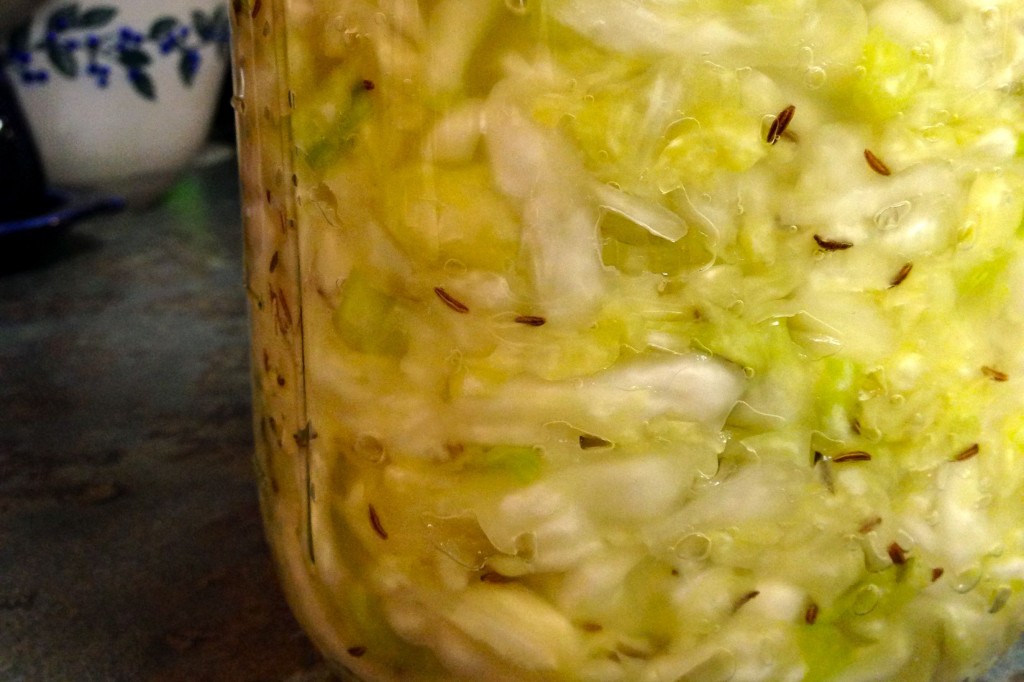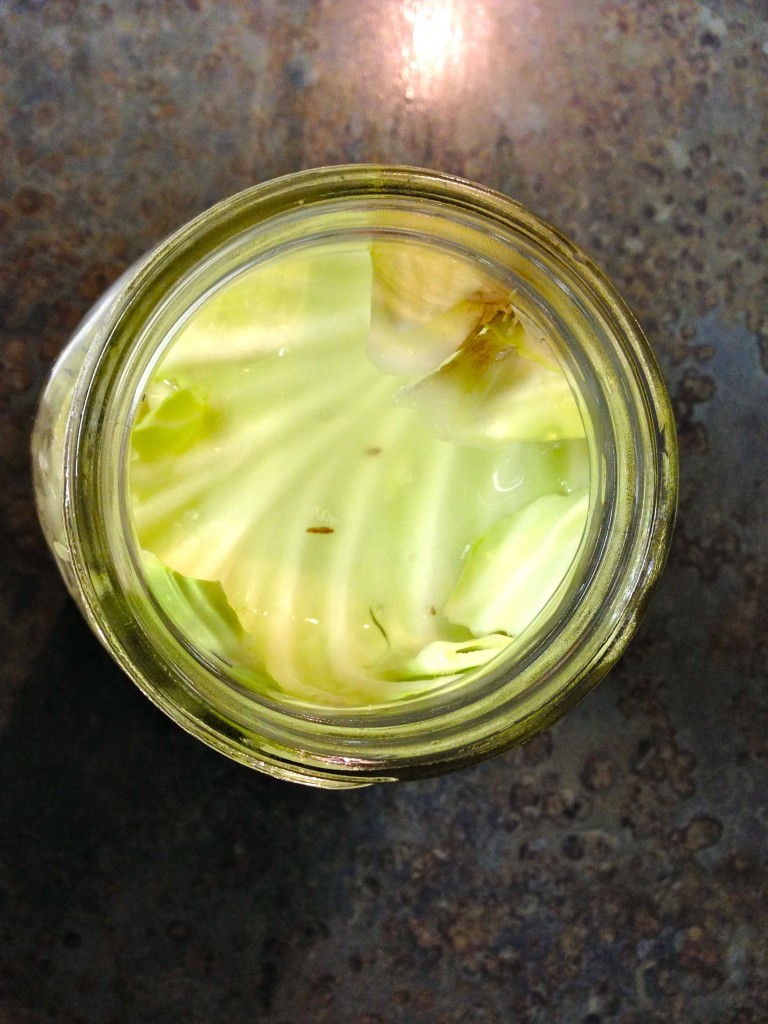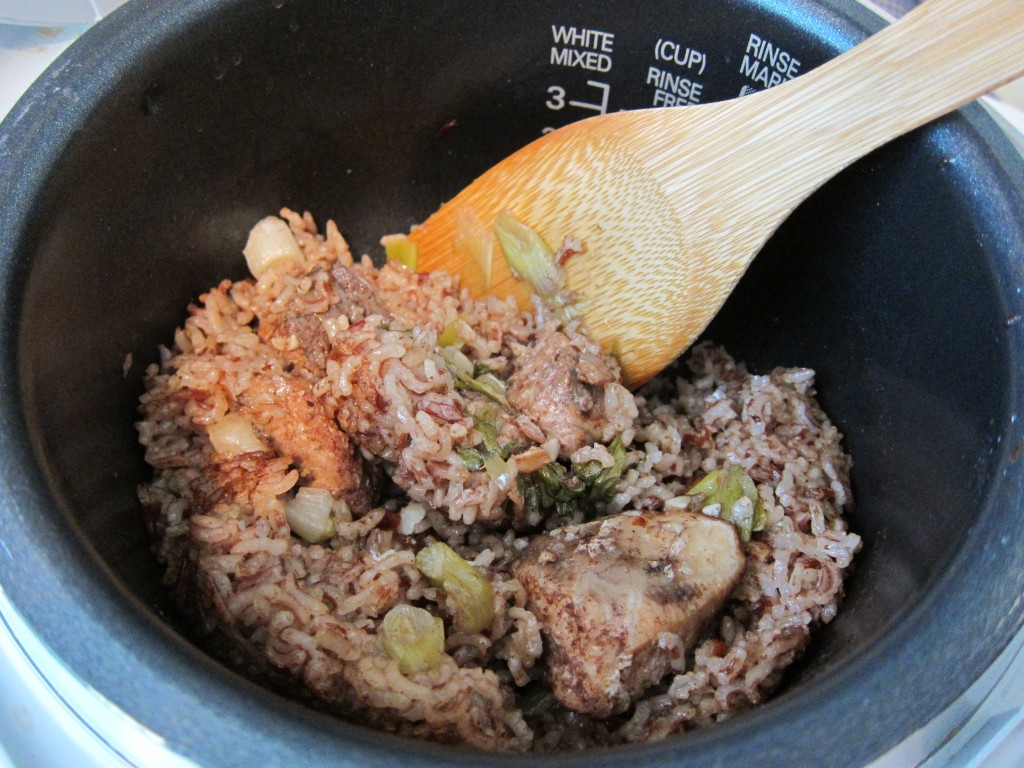 I have always had a place in my heart for sauerkraut. Even as a wee little girl.
I have always had a place in my heart for sauerkraut. Even as a wee little girl.
Perhaps it is the German in me (my maternal grandmother was only a few generations off the boat) or the Pennsylvania Dutch (my father was born and raised in Altoona, an hour outside of Pittsburgh). Growing up — and even to this day — if we didn’t have sauerkraut with our pork on New Year’s Eve, we just knew we were in for a bad year ahead.
Either way, I am a girl who loves pickled things, and fermented, sour, tangy cabbage seems to be closely related.
The chemical process of fermentation brings those qualities out of cabbage. And while you can alter the taste by adding caraway seeds or juniper berries, or even using a different type of cabbage, the nutritional and health benefits remain the same. Even comparing sauerkraut with kimchee, you’ll find that they are virtually the same … except, of course, kimchee has additional ingredients that give it that real kick-in-the-teeth flavor.
The history of sauerkraut is tightly related to that of its kimchee cousin. It’s believed that Genghis Khan introduced fermented cabbage to Europe after he invaded China. It took root in Eastern Europe and Germanic cultures, where sauerkraut is most famous today. The advantages of preservation made it ideal for long-distance traveling in the early days of exploration. And sauerkraut’s health benefits were known even then. Captain James Cook, famous for his explorations of Australia and Hawaii, was known to bring it on voyages, as he believed it prevented scurvy.

Little did Cook know, sauerkraut is full of vitamin C … and fiber, calcium, iron, folate and potassium … and even more vitamins and minerals, in higher concentrations than raw or cooked cabbage. Not to mention all the good belly benefits you get from fermented things, when they’re unpasteurized and uncooked.
While making sauerkraut may seem a bit daunting, trust me — it’s easy! All it takes is a little patience. There seem to be two key elements to making ‘kraut — which holds true to making any fermented food:
- Make sure all your equipment — bowls, spoons, jars, knives, cutting boards and even your hands — are clean and rinsed thoroughly free of soap residue. Cleanliness is very important; The process will be making good bacteria, and you do not want to introduce anything that will kill or harm that process.
- Fermenting takes time. While the method I followed claimed it would be done after three days, I felt it needed more time. The bubbles — yes, bubbles — didn’t show up in my batch until day three, and it wasn’t quite done in four. I tasted it everyday, checking the pungency was to my liking. After a week it was spot on and I moved it to the fridge.
Now I want to explore pickling further — different flavors, different veggies. Sauerkraut may just be a “gateway drug” into a whole new fermented world for me. But, unlike the early European explorers, I promise to tread lightly …
“Quick” Homemade Sauerkraut
I followed a method I found in the Kitchn’s lessons. Since the ingredients are extremely simple, I didn’t deviate too much.1 head green cabbage, medium size
1 1/2 tablespoon kosher salt
1 tablespoon caraway seeds
Start by giving everything a thorough cleaning: the cutting board and knife, large mixing bowl, the 2-quart wide-mouth mason jar and the canning funnel.
Discard any limp outer leaves. Save at least one good leaf for later. Remove the core from the cabbage by cutting off the end. Slice in quarters and remove any bits of core left over. Cut each quarter, again, in half lengthwise. Slice each section into thin ribbons by cutting cross-wise. Throw all sliced cabbage into the large mixing bowl. Note, I used a very large stockpot, as that was the largest “bowl” I had on hand.
Add the salt to the sliced cabbage. Begin to mix the salt and cabbage with your hands. The process of massaging and squeezing the cabbage will release water. You will see the cabbage begin to shrink as well. This process should take 5 to 10 minutes. Mix in the caraway seeds.
Transfer the cabbage to the large mason jar. As you add it in, use your hand or fist or something that fits into the opening to mash down the cabbage. The amount of cabbage may not seem like it will fit, but it will as you push it down, compacting it towards as the bottom as you continue to add it all.
When all of the cabbage is in the jar, use a canning funnel to pour the liquid left in the bowl into the mason jar. Use the leftover cabbage leaf from the beginning of the process to cover the cabbage. Push the leaf down so that the liquid rises above it.
Use a smaller jar or heavy object (thoroughly cleaned and rinsed) that fits inside the larger jar to weigh down the
cabbage. I used a small jelly jar that would fit below the large jar’s mouth. You can fill it with cleaned marbles or even rocks, anything to give it weight. Place this smaller jar inside the larger jar, on top of the cabbage, pressing down. Cover the larger jar opening with a cloth tightly secured with a rubber band. This will allow the sauerkraut to breathe while keeping bad things out. Store the jar out of direct sunlight at 65 to 75 degrees.
Every so often — if you’re home, every few hours, or at least a couple of times a day — continue compressing the cabbage by pressing the jar or heavy object down. This will cause the liquid to rise to the top. You’ll notice that the cabbage seems to shrink in size as more liquid is released.
The process may take as little as three days and as much as 10. After three days, taste to determine if more time is needed. At this point, signs of fermentation should be obvious – bubbles will appear at the top and a strong, pungent smell should be present. When it is done to your taste, remove the inner jar, cabbage leaf and cloth. Screw on the top to the jar and store in your fridge.
Sauerkraut can be stored for months, thanks to the fermentation process.

 Then, when I first moved to Washington, DC., in 2005, I was the thinnest I’d been in years … yet still considered “
Then, when I first moved to Washington, DC., in 2005, I was the thinnest I’d been in years … yet still considered “






